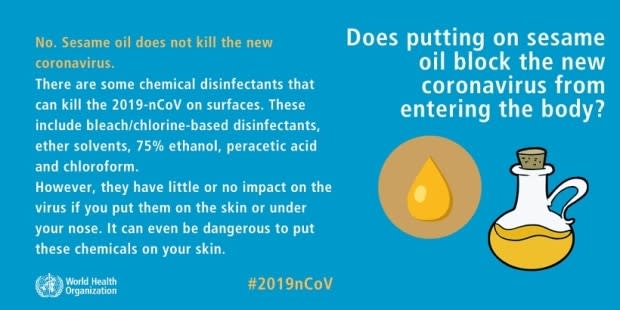Misinformation may make disease outbreaks worse, researchers say
Public health researchers in the U.K. say that the spread of misinformation during a disease outbreak may make the outbreak more severe, and that reducing the amount of harmful advice circulating by even a little bit could mitigate that effect.
Julii Brainard and Paul R. Hunter at the University of East Anglia reached that conclusion using a simulation to model how the spread of information might affect the spread of three different viral diseases. Their results were first presented at a U.K. public health conference in 2018 but were published again recently in the journal Revue d'Épidémiologie et de Santé Publique (Journal of Epidemiology and Public Health).
The findings could be relevant in light of how far and how fast misinformation has spread around COVID-19 in recent weeks.
The novel coronavirus was first detected in Wuhan, China, in December and since then has killed more than 2,200 people and sickened tens of thousands more, according to figures from the World Health Organization (WHO). The outbreak has led to quarantines, travel restrictions and cancellations of events around the world — prompted in part by an abundance of caution, and in part by misinformation about the virus's spread.
The WHO was so concerned, it set up a "myth busters" page to debunk claims such as eating garlic or spraying chlorine all over your body can prevent coronavirus infection (they can't). Members of the International Fact-Checking Network, a group set up by the non-profit journalism organization Poynter, have run over 430 stories debunking claims around coronavirus since Jan. 22.
How the simulation works
Brainard explained that there are many existing models for how disease can spread which factor in the ways people move around and have contact with each other, and how often that can lead to illness.
"What we did differently in this that hadn't been done before was we had information spread, but the information could be good or bad in terms of affecting behaviour," she said.
So in the simulation, "people could take both good advice on how to avoid contracting a disease, or they might take bad advice, anything from failing to wash their hands to actively seeking out someone who is ill."

Brainard and Hunter used real-world data for influenza, norovirus and monkeypox, which all have different incubation periods and recovery times. This was intended to show that the findings could be adapted to different diseases and different situations.
Brainard also explained that they considered the spread of bad information cumulative in their model.
"So if you have good information and bad information circulating, and if the bad information is kind of winning out, then over time you're going to drift into more and more bad habits," she said.
Misinformation led to more risks
In the first stage of the model, Brainard said, they assumed diseases spread without people changing their behaviour in any way, and then they measured how many people got sick.
In the second stage, half the people in the model were exposed to good information and half exposed to bad. The simulation was set up to replicate information-sharing patterns from a study published in the journal Science in 2018 which examined false news spread on Twitter over an 11-year period. That study found that false news reached more people than truthful information, and it reached them faster.
The result in Brainard and Hunter's model was that more people got sick because they took more risks with their health due to following bad advice: in the influenza example, 82.7 per cent of the population got sick in the second stage, versus 59.2 per cent in the first stage.
While in real life, fewer people would actually get the flu because they have prior immunity, the researchers assumed no one had prior immunity to the diseases in their model — which is more likely to be the case with a newly identified virus like COVID-19.
The model also found that reducing the amount of harmful advice circulating by just 10 per cent could reduce the effect of bad information on an outbreak.
In the third stage of the model, Brainard said, they assumed that 60 per cent of people received good information and 40 per cent received bad information — and even that small change resulted in sickness numbers dropping back to levels comparable to the first stage of the model.
The model also took into account that people must be in physical contact to spread the disease, but information about the disease can be passed along through social media and virtual contact.
Brainard said she was surprised that a relatively small reduction of misinformation in the model could change outcomes.
"I thought, you know, maybe we'd need a more dramatic difference," she said. "But that is basically saying just a small leverage in one direction or the other can actually have a big impact in terms of countering the effects of [misinformation]."
Still, Brainard cautions, her work is a model under development and hasn't been tested in real-world settings, something she would like to see in the future.
"I think it's just one step toward trying to figure out how ... we can influence the narrative and influence what sources of information people are using. It's only a start," said Brainard.

